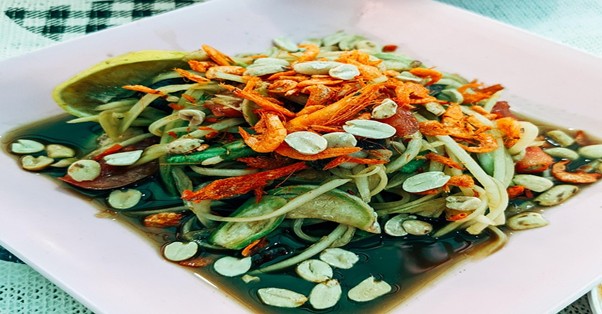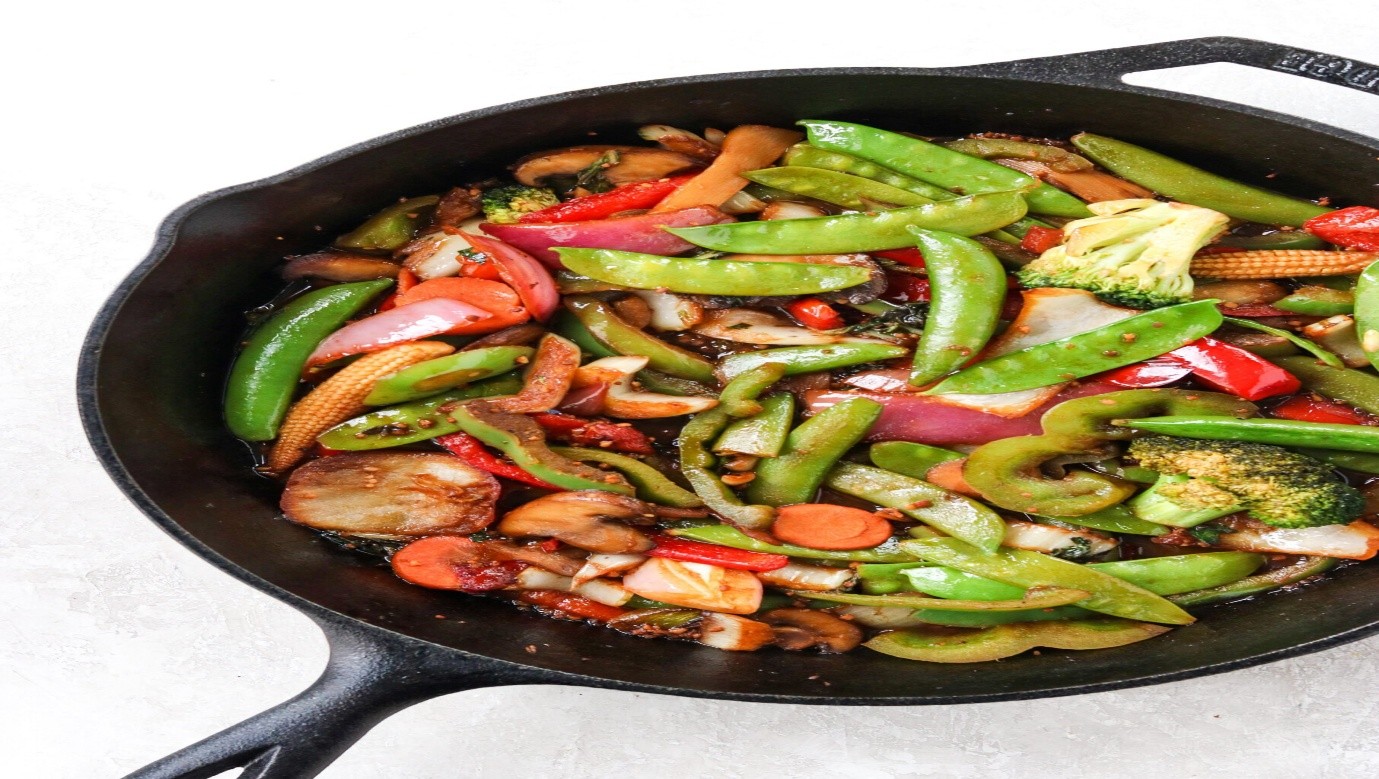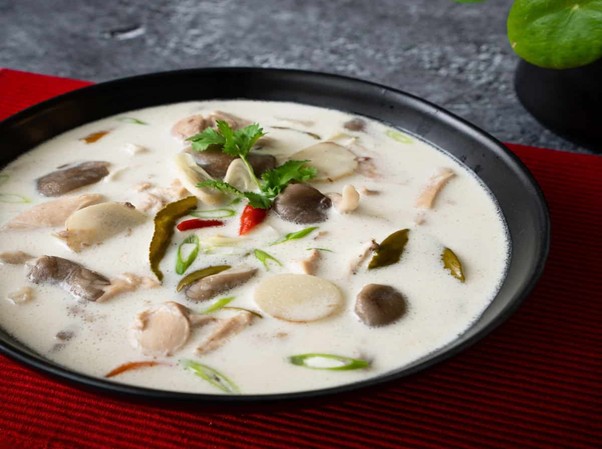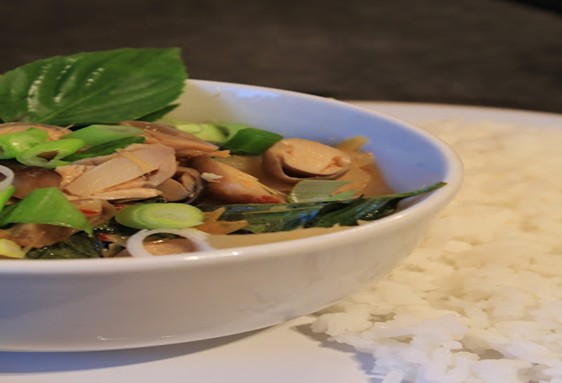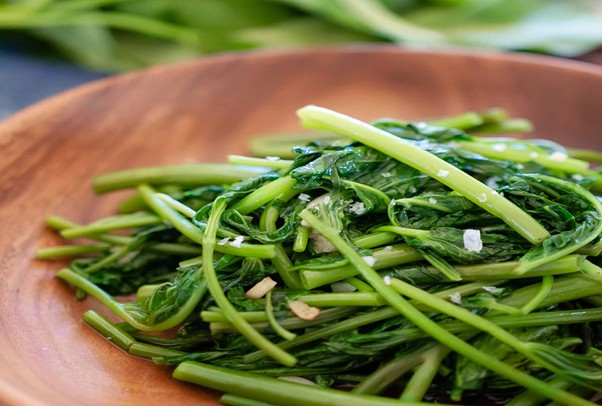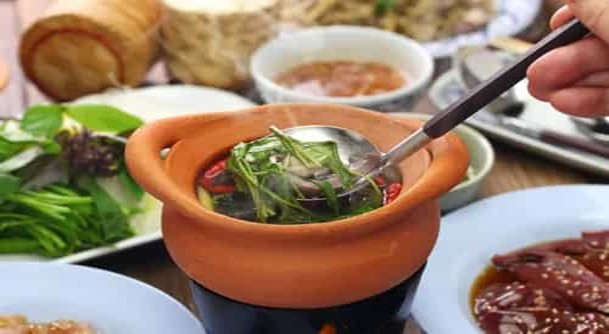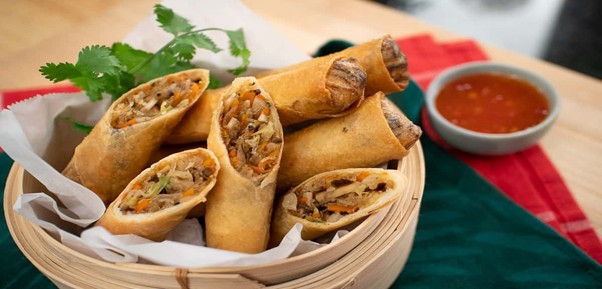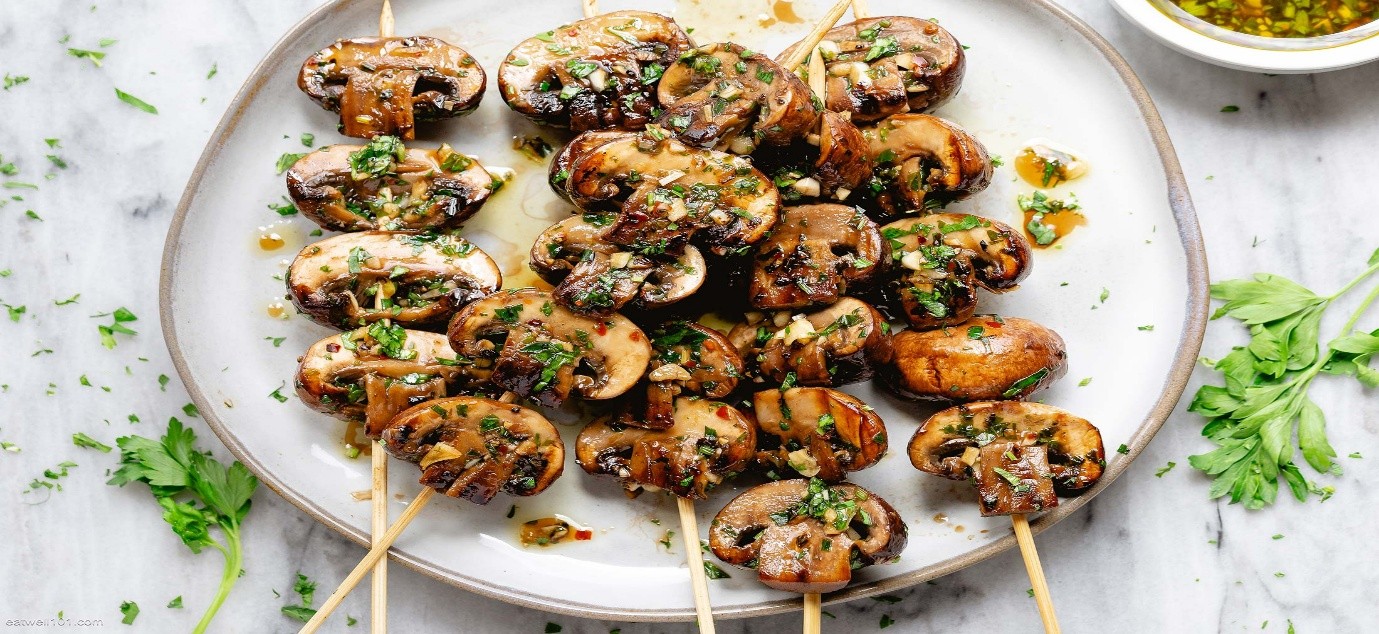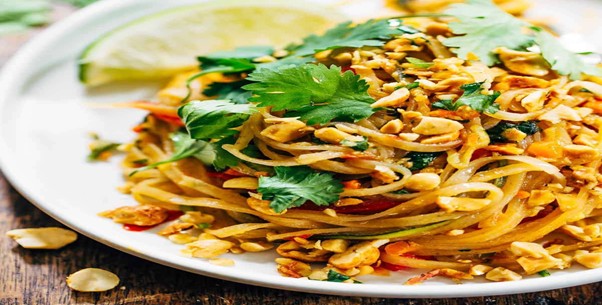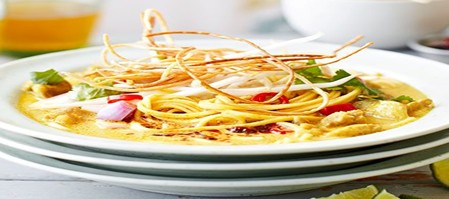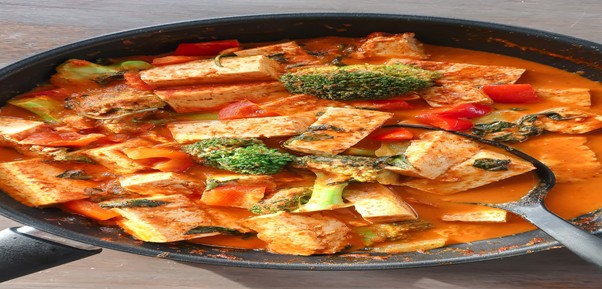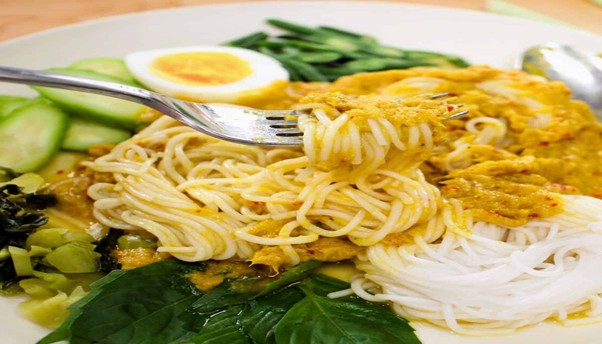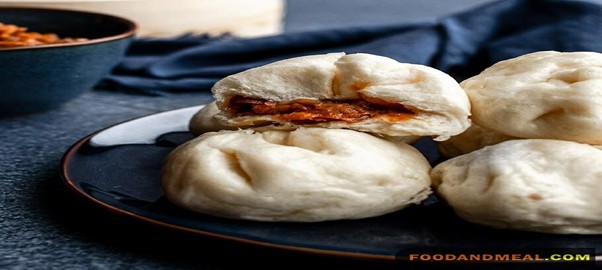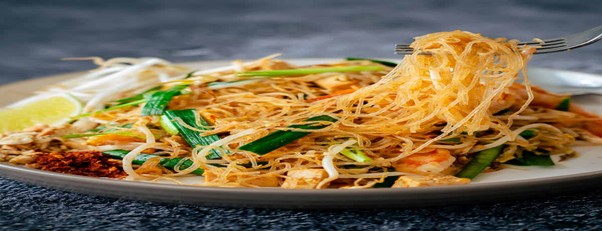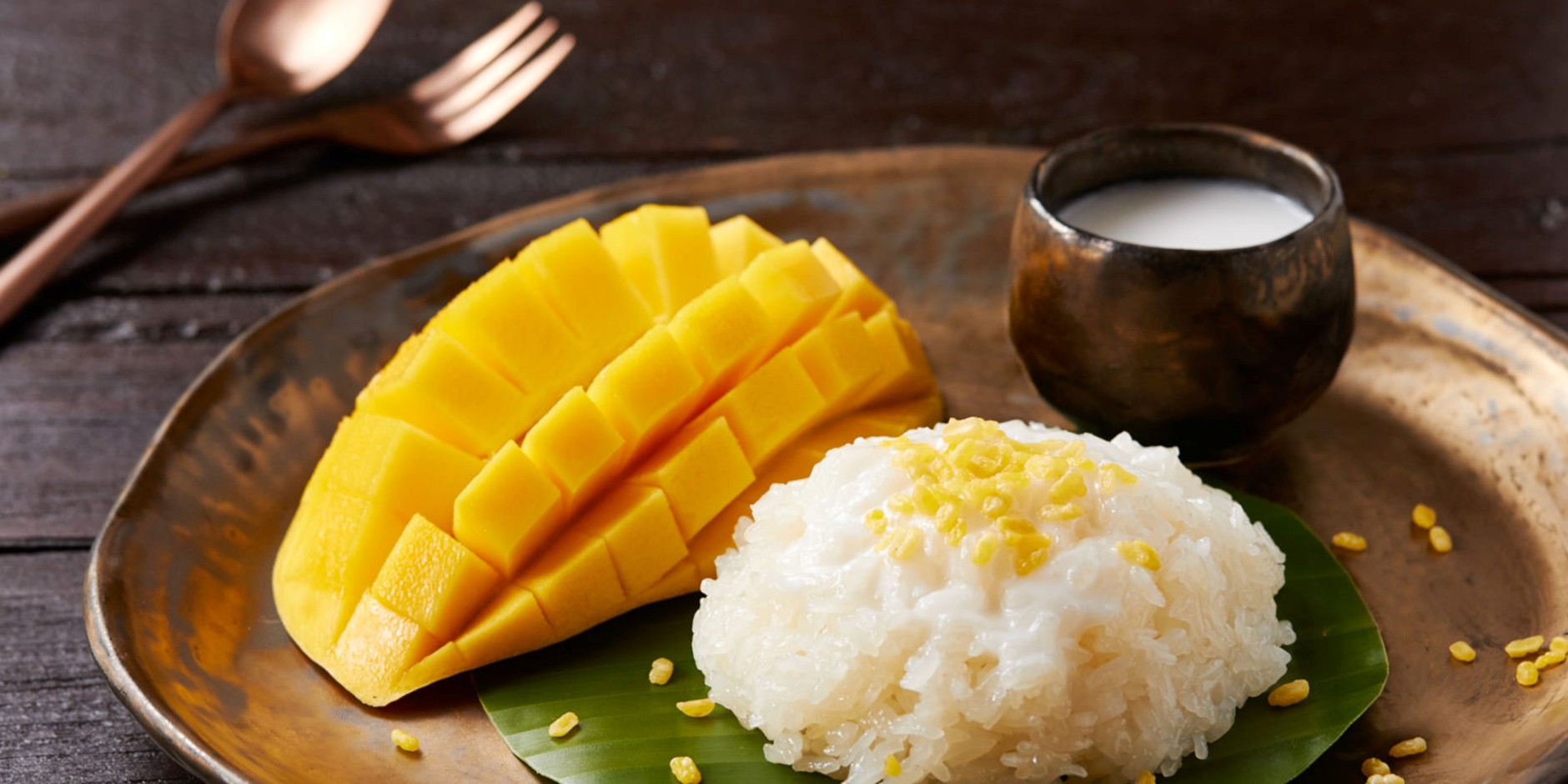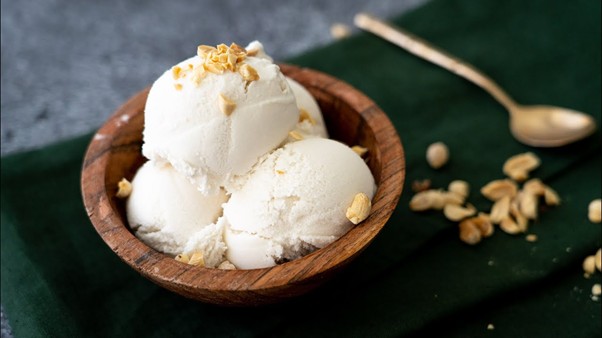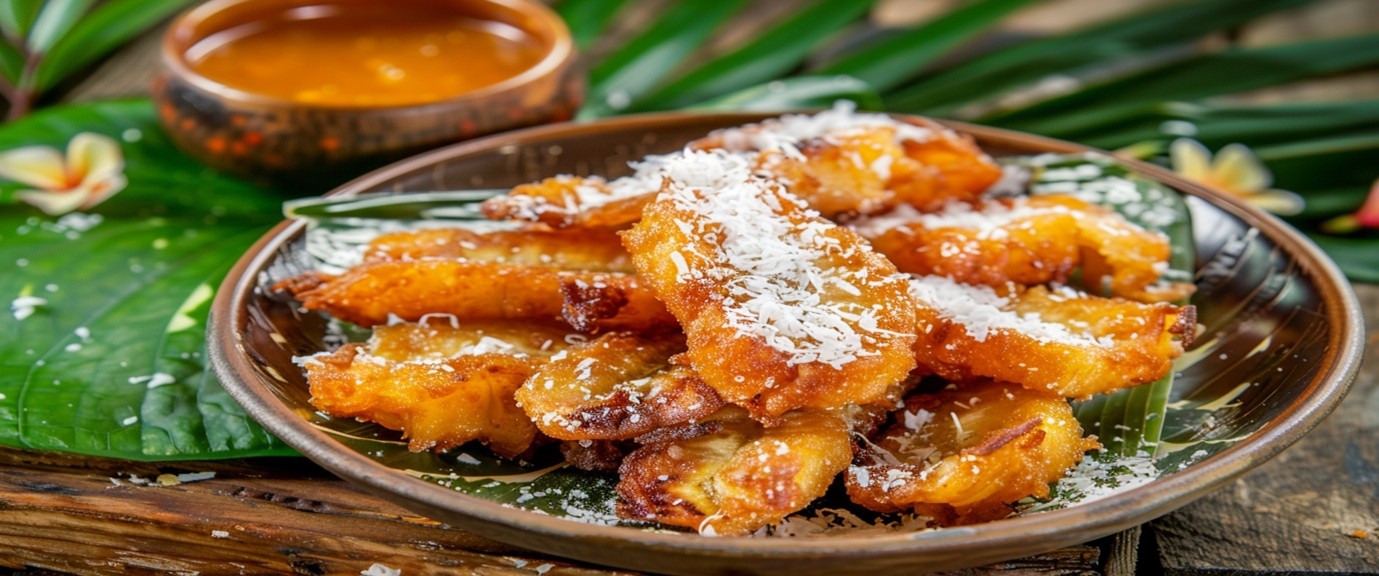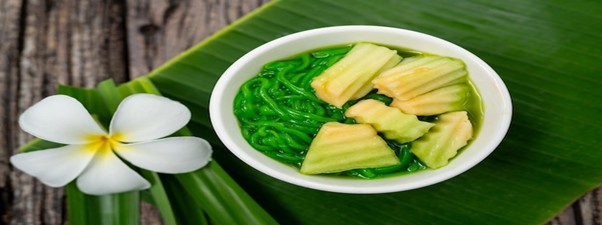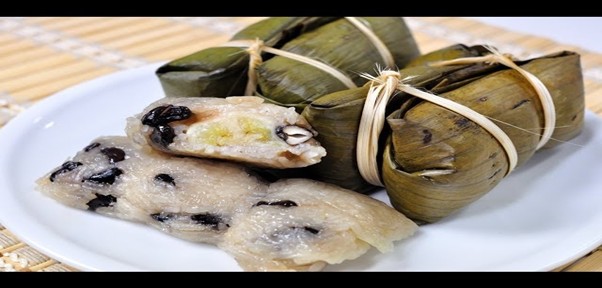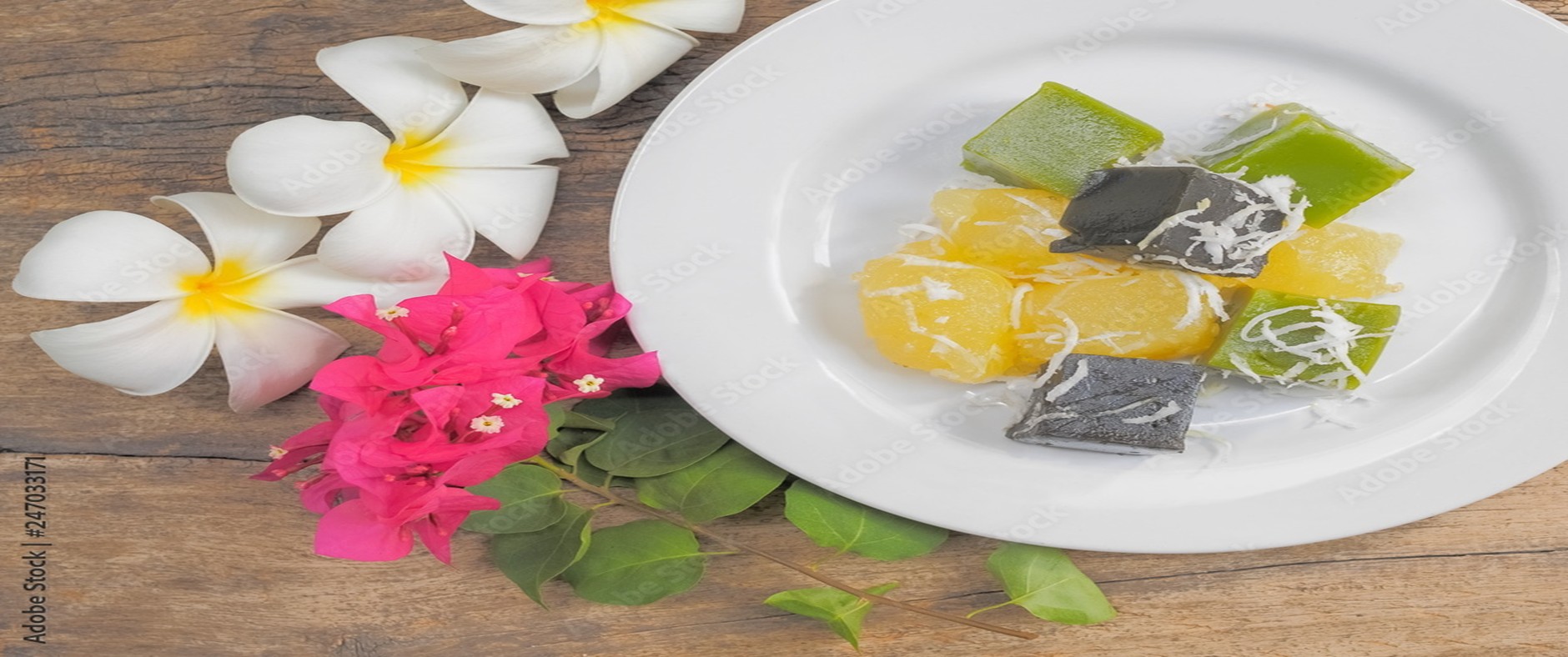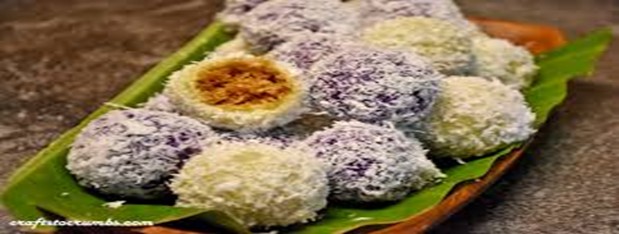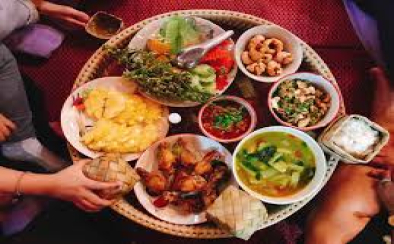
Posted by: Priyanshu Raj Singh
Authentic Thai Cuisine
You Should Experience
Thai
cuisine is a vibrant fusion of bold flavours, fresh ingredients, and fragrant
herbs and spices. The following are some signature dishes that are often
considered highlights of any Thailand tour package.
Authentic Vegetarian Cuisine
Som Tam (Thai Papaya Salad)
One of Thailand’s most iconic dishes, Som Tam is a refreshing salad made
from shredded raw green papaya, tossed with lime juice, chili, and a medley of
aromatic herbs and spices. It’s a favourite among locals and travellers alike.
Som Tam (Thai Papaya Salad) – Simple &
Authentic Recipe
Ingredients:
·
1 cup finely shredded green papaya
·
5–6 cherry tomatoes, halved
·
5–6 green beans, chopped into 1-inch pieces
·
2–3 garlic cloves
·
2 bird’s eye chilies (adjust for spice
preference)
·
1 tbsp fish sauce
·
1 tbsp freshly squeezed lime juice
·
1 tsp palm sugar (or brown sugar)
·
1 tbsp roasted peanuts (optional)
Method:
1. Using
a mortar and pestle, crush the garlic and chilies
to release their aroma.
2. Add
the green beans and cherry tomatoes, and gently bruise
them to absorb the flavors.
3. Stir
in the fish sauce, lime juice, and sugar,
blending well to create a balanced dressing.
4. Add
the shredded papaya and toss everything together
until evenly coated.
5. Garnish
with roasted peanuts and serve immediately for the
freshest taste.
Enjoy this vibrant Thai salad that masterfully combines spicy, sour, salty,
and sweet notes in every bite.
Pad Pak (Stir-Fried Vegetables)
A reliable vegetarian option, Pad Pak is a simple yet flavourful mix of
seasonal vegetables stir-fried with soy sauce and garlic. It's commonly
recommended when requesting vegetarian meals.
Pad Pak (Thai Stir-Fried Vegetables) –
Simplified Recipe
Ingredients:
·
1 cup assorted vegetables (e.g., broccoli,
carrots, bell peppers, baby corn)
·
2–3 cloves garlic, finely minced
·
1 tbsp soy sauce
·
1 tbsp oyster sauce (optional)
·
1 tsp sugar
·
2 tbsp vegetable oil
·
2–3 tbsp water
Instructions:
1. Heat
oil in a wok or skillet and gently sauté garlic until aromatic.
2. Add
mixed vegetables and stir-fry over high heat for 2–3 minutes.
3. Stir
in soy sauce, oyster sauce (if using), sugar, and water.
4. Continue
stir-frying until vegetables are cooked yet retain their crunch.
5. Serve
warm as a flavorful accompaniment or with steamed rice.
A vibrant, nutritious Thai classic—bursting with color, texture, and
authentic flavor.
Tom Kha (Thai Coconut Soup)
A comforting dish that blends the richness of coconut milk with lemongrass,
galangal, and kaffir lime. Though it’s classified as a soup, its thick consistency
often makes it feel more like a curry—typically served with rice.
Tom Kha (Thai Coconut Soup) – Simple &
Flavorful Recipe
Ingredients:
·
1 cup coconut milk
·
1 cup chicken or vegetable broth
·
1–2 stalks lemongrass, trimmed and lightly
crushed
·
3–4 slices of galangal (or substitute with
ginger)
·
3–4 kaffir lime leaves, gently torn
·
100g chicken or mushrooms (vegetarian
alternative)
·
3–4 Thai bird’s eye chilies, crushed (adjust to
taste)
·
1 tbsp fish sauce (or soy sauce for a vegetarian
option)
·
1 tbsp freshly squeezed lime juice
·
Fresh coriander for garnish
Instructions:
1. In
a saucepan, gently bring the coconut milk and broth to a simmer.
2. Add
lemongrass, galangal, lime leaves, and chilies; allow to infuse for 5–7
minutes.
3. Incorporate
chicken or mushrooms and cook until tender.
4. Season
with fish sauce and lime juice to balance the flavor.
5. Finish
with fresh coriander and serve warm.
Experience a harmonious blend of creamy coconut, zesty citrus,
and bold Thai spices in this comforting and aromatic soup.
Gang Hed (Thai Mushroom Curry)
A flavourful curry highlighting a variety of mushrooms beyond the usual
button and oyster types. It's a rich and earthy vegetarian delight.
Gang Hed (Thai Mushroom Curry) – Simple &
Flavor-Packed Recipe
Ingredients:
·
1 cup assorted mushrooms (such as oyster,
shiitake, or button)
·
1 cup coconut milk
·
1 tbsp Thai red curry paste
·
2–3 kaffir lime leaves, gently torn
·
1–2 Thai bird’s eye chilies (optional,
for heat)
·
1 tbsp soy sauce or fish sauce
·
1 tsp palm sugar or brown sugar
·
Fresh basil or coriander leaves, for garnish
Instructions:
1. In
a saucepan, warm a small amount of coconut milk and stir in the red curry paste
until the aroma is released.
2. Pour
in the remaining coconut milk, add kaffir lime leaves and chilies, and allow to
simmer for 3–5 minutes.
3. Add
the mixed mushrooms and cook until tender and infused with flavor.
4. Season
the curry with soy sauce or fish sauce and a touch of sugar to balance the
taste.
5. Garnish
with fresh herbs and serve hot.
This velvety, aromatic Thai mushroom curry offers a delightful
balance of spice, sweetness, and earthy umami—perfect for a comforting meal.
Morning Glory (Stir-Fried Water Spinach)
Known locally as "Pak Boong," this leafy green is commonly found
across Thai islands. It’s stir-fried with garlic and chili, similar to how
spinach is used in Indian cuisine.
Morning Glory Stir-Fry (Pad Pak Boong) – Quick
& Flavorful Thai Delight
Ingredients:
·
1 bunch water spinach (morning glory), trimmed
and cut into 3-inch segments
·
2–3 garlic cloves, lightly crushed
·
1–2 Thai bird’s eye chilies (optional), thinly
sliced
·
1 tbsp soy sauce
·
1 tbsp oyster sauce (or mushroom sauce for a
vegetarian option)
·
1 tsp sugar
·
2 tbsp cooking oil
Method:
1. Heat
oil in a wok over high flame until hot.
2. Add
crushed garlic and chilies; stir-fry until fragrant.
3. Quickly
add the water spinach and toss vigorously.
4. Stir
in soy sauce, oyster sauce, and sugar. Stir-fry for 1–2 minutes until just
wilted.
5. Serve
immediately for best texture and flavor.
A vibrant, nutritious Thai side dish known for its smoky aroma,
tender-crisp texture, and perfectly balanced savory notes.
Jim Jum (Isaan Hot Pot)
A communal hot pot experience where diners cook their
own vegetables and noodles in a flavorful broth. It’s both interactive and
fully customizable, making it a trusted vegetarian option.
Jim Jum (Isaan Hot Pot) – Vegetarian Style |
Quick & Nourishing Thai Delight
Ingredients:
·
2 cups assorted vegetables (baby corn, napa
cabbage, morning glory, mushrooms, carrots)
·
100g soaked glass noodles
·
2–3 tofu cubes or soy protein (optional)
·
2–3 garlic cloves, finely minced
·
1 stalk lemongrass, gently crushed
·
3–4 kaffir lime leaves, torn
·
2–3 Thai chilies, sliced (optional)
·
3 cups vegetable broth
·
1 tbsp soy sauce
·
1 tsp lime juice
·
Fresh Thai basil and coriander for garnish
Instructions:
1. In
a traditional clay pot or small hot pot, bring the vegetable broth to a gentle
boil.
2. Add
garlic, lemongrass, kaffir lime leaves, and chilies. Simmer for 5 minutes to
infuse the broth.
3. Introduce
tofu, vegetables, and glass noodles into the pot. Cook until just tender.
4. Season
with soy sauce and a touch of lime juice for brightness.
5. Garnish
with fresh Thai basil and coriander before serving.
A fragrant, soul-warming Thai hot pot that’s light yet
flavorful—celebrating the essence of Thai herbs and wholesome plant-based
goodness.
Thai Vegetable Spring Rolls
A popular appetizer filled with cabbage, carrots,
onions, and ginger—crispy on the outside and flavourful inside. Often served
with a sweet chili dipping sauce.
Thai Vegetable Spring Rolls – A Crisp,
Flavor-Packed Starter
Ingredients:
·
1 cup finely shredded mixed vegetables (carrots,
cabbage, bell peppers)
·
1–2 garlic cloves, minced
·
1 tbsp soy sauce
·
1 tsp sesame oil (optional)
·
Spring roll wrappers
·
Oil for deep frying
Instructions:
1. Lightly
sauté the garlic and vegetables in soy sauce and sesame oil until just tender.
Allow to cool.
2. Spoon
the mixture onto each wrapper, roll tightly, and seal the edges with a touch of
water.
3. Deep-fry
the rolls until golden and crispy.
4. Serve
immediately with sweet chili or plum dipping sauce.
A vibrant, crunchy appetizer bursting with fresh Thai
flavors—perfect for any occasion.
Grilled Mushrooms on Skewers
Street
vendors offer a selection of mushrooms skewered and grilled to perfection. You
can enhance the taste with sauces or enjoy them plain.
Grilled Mushroom Skewers – A Juicy, Smoky
Vegetarian Delight
Ingredients:
·
200g fresh button or assorted mushrooms, cleaned
·
1 tbsp olive oil
·
1 tsp soy sauce or balsamic vinegar
·
1 clove garlic, finely minced
·
A pinch of freshly ground black pepper
·
Wooden or metal skewers
Method:
1. In
a mixing bowl, combine mushrooms with olive oil, soy sauce, garlic, and black
pepper. Toss to coat evenly.
2. Carefully
thread the seasoned mushrooms onto skewers.
3. Grill
over medium heat for 6–8 minutes, turning occasionally, until the mushrooms are
tender and slightly charred.
4. Serve
immediately as a vibrant appetizer or wholesome side.
A simple yet elegant grilled dish that delivers earthy flavors
and a satisfying smoky finish—ideal for outdoor gatherings or light, healthy
meals.
Pad Thai (Vegetarian)
Thailand’s most famous noodle dish. When ordering
vegetarian Pad Thai, be sure to request it without egg if you prefer a fully
plant-based meal.
Pad Thai (Vegetarian) – A Quick & Aromatic
Thai Noodle Classic
Ingredients:
·
120g flat rice noodles
·
1 cup assorted vegetables (carrots, bean
sprouts, bell peppers)
·
2 tbsp pan-seared tofu cubes (optional)
·
2 garlic cloves, finely minced
·
1 tbsp tamarind paste
·
1 tbsp soy sauce
·
1 tsp brown sugar
·
1 tbsp cooking oil
·
Crushed peanuts and lime wedges for garnish
Method:
1. Soak
noodles in warm water until softened. Drain and keep aside.
2. Heat
oil in a wok or pan; sauté garlic and tofu until lightly browned.
3. Add
mixed vegetables and stir-fry briefly over high heat.
4. Incorporate
tamarind paste, soy sauce, and sugar. Stir to combine.
5. Add
the softened noodles and toss until evenly coated and heated through.
6. Plate
and garnish with crushed peanuts and a wedge of lime.
A delicious harmony of sweet, tangy, and savory elements—this
vegetarian Pad Thai delivers an authentic Thai experience in every bite.
Thai Pea Eggplant
(Makheua Puang)

Similar to India’s Sundakkai or Turkey Berry, these
tiny eggplants are used in various curries. Their slightly bitter flavour adds
depth to many traditional recipes.
Khao Soi (Chiang Mai Curry Noodles)
A northern Thai specialty—spicy coconut curry broth
served over soft noodles and topped with crispy fried noodles. Packed with
flavour and spice, it’s a must-try.
Khao Soi
(Vegetarian Chiang Mai Curry Noodles) – A Rich, Aromatic Thai Delight
Ingredients:
- 120g egg noodles or flat
rice noodles
- 1 cup coconut milk
- 1 cup vegetable broth
- 1 tbsp vegetarian yellow or
red curry paste
- ½ tsp turmeric powder
- ½ cup lightly pan-fried tofu
cubes
- Pickled mustard greens,
sliced red onion, and lime wedges (for garnish)
- Crispy fried noodles (for
topping)
- 1 tbsp soy sauce
- 1 tsp brown sugar
- Cooking oil as needed
Method:
- In a heated pot, sauté the
curry paste and turmeric in a little oil until aromatic.
- Add coconut milk and
vegetable broth; stir well and bring to a gentle simmer.
- Incorporate tofu, soy sauce,
and sugar. Let it simmer for 5–7 minutes to blend flavors.
- Meanwhile, cook noodles
according to package instructions and place them in serving bowls.
- Ladle the hot curry over the
noodles.
- Garnish generously with
crispy noodles, pickled mustard greens, red onion, and a wedge of lime.
A
soul-warming Northern Thai noodle curry with layers of creamy, tangy, and mildly
spicy flavors—crafted for vegetarians without compromising authenticity.
Thai Tofu Coconut Curry
Tofu is a staple protein in Thai vegetarian cuisine.
This curry, made with either green or red curry paste, combines tofu with
vegetables in a rich coconut base.
Thai Tofu
Coconut Curry – A Lusciously Creamy Vegan Delight
Ingredients:
- 1 cup coconut milk
- 1 tbsp vegan Thai red or
yellow curry paste
- ½ cup tofu, lightly
pan-fried
- 1 cup assorted vegetables
(e.g., bell peppers, carrots, broccoli)
- 1 tbsp soy sauce
- 1 tsp brown sugar
- Fresh basil or coriander
leaves for garnish
- Cooking oil as needed
Instructions:
- Warm oil in a pan and sauté
the curry paste until aromatic.
- Pour in coconut milk, then
add soy sauce and brown sugar; stir to combine.
- Add tofu and vegetables, and
let simmer for 7–10 minutes until vegetables are cooked through.
- Garnish with fresh herbs and
serve immediately with steamed rice.
A
velvety, flavor-packed curry that delivers bold Thai essence in every
bite—ideal for a satisfying plant-based meal.
Thai Rice Vermicelli (Khanom Jeen)
Common in Northern Thailand, this dish features
colourful vermicelli noodles, often dyed naturally with pea flowers, turmeric,
or rose. It's as visually appealing as it is delicious.
Khanom
Jeen (Thai Rice Vermicelli) – Delicate, Adaptable & Deeply Rooted in Thai
Tradition
Ingredients:
- 120g Thai rice vermicelli
noodles
- 1½ liters water, for boiling
- Optional accompaniments:
green curry, red curry, peanut sauce, fresh herbs, pickled vegetables
Instructions:
- Bring water to a rolling
boil in a large pot. Add the rice vermicelli and cook for 3–5 minutes
until tender.
- Drain and rinse under cold
water to halt cooking and prevent clumping.
- Arrange into neat noodle
nests or serve directly.
- Complement with a rich Thai
curry, fragrant herbs, or tangy garnishes.
A light
and silky noodle dish that serves as the perfect canvas for Thailand’s bold,
complex flavors.
Salapao (Steamed Buns)
Similar to Indian pao, these Thai buns are stuffed and
steamed. The vegetarian option often features a sweet black bean filling—a
delightful snack or breakfast choice.
Salapao
(Thai Steamed Buns) – Soft, Airy & Delightfully Stuffed
Ingredients:
- 2 cups all-purpose flour
- 1 tsp instant yeast
- 2 tbsp sugar
- ½ cup warm water
- 1 tbsp oil
- Filling options: sweet red
bean paste, seasoned vegetables, or tofu
Method:
- Combine flour, yeast, sugar,
warm water, and oil to form a smooth dough. Cover and let it rise for
about an hour.
- Divide the dough, shape into
rounds, and fill each with your preferred stuffing. Pinch the edges to
seal.
- Place each bun on parchment
paper and allow to rest for 15 minutes.
- Steam for 12–15 minutes
until soft, fluffy, and fully cooked.
A
traditional Thai-Chinese delicacy—light and pillowy buns with a flavorful core,
perfect for a savory snack or a sweet indulgence.
Thai Bean Thread Glass Noodles
Made from mung beans, these translucent noodles are
gluten-free and often served in stir-fries or light broths with vegetables.
Thai Bean
Thread Noodles – Light, Aromatic & Wholesomely Vegetarian
Ingredients:
- 100g bean thread (glass)
noodles, pre-soaked
- 1 cup assorted vegetables
(carrots, cabbage, mushrooms)
- ½ cup pan-fried tofu cubes
(optional)
- 2 cloves garlic, finely
minced
- 1 tbsp soy sauce
- 1 tsp sesame or vegetable
oil
- ½ tsp sugar
- Fresh coriander or spring
onions for garnish
Method:
- Soak the bean thread noodles
in warm water for 10 minutes until tender. Drain and keep aside.
- In a heated wok, sauté
garlic and tofu in oil until aromatic.
- Add the mixed vegetables and
stir-fry briefly on high heat.
- Incorporate the softened
noodles along with soy sauce and sugar. Toss well to coat evenly and
stir-fry for 2–3 minutes.
- Garnish with fresh herbs and
serve immediately.
This
gluten-free Thai classic offers delicate textures and savory depth—ideal for a
light yet satisfying plant-based meal.
Mango Sticky Rice (Khao Niew Mamuang)
A beloved Thai dessert of glutinous rice cooked in
coconut milk, paired with sweet ripe mango. It’s rich enough to serve as a main
course for dessert lovers.
Mango
Sticky Rice (Khao Niew Mamuang) – A Classic Thai Dessert of Lush Simplicity
Ingredients:
- 1 cup glutinous (sticky)
rice
- 1 cup coconut milk
- ¼ cup granulated sugar
- ¼ tsp salt
- 1 ripe mango, peeled and
thinly sliced
- Optional: Toasted sesame
seeds or crisp mung beans for garnish
Instructions:
- Soak the sticky rice for 4–6
hours, then steam until soft and translucent.
- Gently heat coconut milk
with sugar and salt—do not bring to a boil.
- Pour most of the coconut
mixture over the warm rice, allowing it to absorb for 15–20 minutes.
- Serve the infused rice
alongside mango slices, spoon over the remaining coconut sauce, and
garnish as desired.
A
delicately sweet and creamy Thai favorite—celebrated for its harmony of
textures and tropical flavors.
Roti Gluay (Banana Roti)

A thick, paratha-style fried bread filled with banana,
Nutella, or caramel. Especially popular in Bangkok and the north, it's a street
food favourite for a sweet tooth.
Roti
Gluay (Banana Roti) – A Golden Thai Street Delight
Ingredients:
- 1 cup all-purpose flour
- 2 tbsp condensed milk
- 2 tbsp oil or melted butter
- Water (as needed to form a
pliable dough)
- 1 ripe banana, thinly sliced
- Oil or butter for frying
- Condensed milk or sugar (for
drizzling)
Instructions:
- Combine flour, condensed
milk, oil, and enough water to create a smooth, elastic dough. Let rest
for 30 minutes.
- Divide dough into small
portions and roll each into a thin, translucent sheet.
- Heat a lightly oiled skillet.
Place the dough sheet on the pan and layer sliced banana in the center.
- Fold edges to encase the
filling, forming a square or envelope shape.
- Fry until golden brown and
crisp on both sides.
- Finish with a drizzle of
sweetened condensed milk or a sprinkle of sugar. Serve immediately.
A crisp
and buttery street-style dessert—caramelized bananas wrapped in flaky pastry,
offering a warm, indulgent bite of Thailand.
Tender Coconut Ice Cream
A refreshing island specialty made with fresh coconut
milk and tender coconut flesh—light, creamy, and perfect for hot days.
Tender
Coconut Ice Cream – Creamy, Refreshing & Naturally Tropical
Ingredients:
- 1 cup tender coconut flesh
(blended)
- ½ cup tender coconut water
- 1 cup coconut milk or cream
- ½ cup condensed milk (adjust
to taste)
- 1 tsp vanilla extract
(optional)
Instructions:
- Blend tender coconut flesh
with coconut water until smooth.
- Add coconut milk and
condensed milk. Mix well.
- Pour into a container and
freeze for 4–6 hours, stirring every 1–2 hours for a creamier texture (or
use an ice cream maker).
- Serve chilled, garnished
with coconut bits if desired.
A smooth,
tropical delight—perfectly light and naturally sweet, capturing the essence of
tender coconut in every bite.
Thai Fried Banana Fritters (Kluai Tod)
Banana slices are dipped in
batter, deep-fried until golden, and often served with honey, caramel, or ice
cream. A delightful, crispy dessert.
Thai
Fried Banana Fritters (Kluai Tod) – Crisp, Caramelized & Irresistibly Thai
Ingredients:
- 3 firm ripe bananas, sliced
lengthwise or diagonally
- ½ cup rice flour
- 2 tbsp all-purpose flour
- 2 tbsp shredded coconut
(optional)
- ¼ tsp salt
- 2 tbsp sugar
- ¼ cup water
- Oil for deep frying
Instructions:
- Combine rice flour,
all-purpose flour, shredded coconut, salt, sugar, and water in a bowl to
create a smooth, lump-free batter.
- Coat banana slices evenly in
the batter.
- Deep-fry in hot oil until
golden brown and crisp.
- Remove and drain on paper
towels. Serve immediately for best texture.
A
traditional Thai indulgence—beautifully crisp on the outside, lusciously soft
on the inside, and naturally sweet with a hint of coconut.
Khanom Buang (Thai Crepes)
Crispy mini crepes filled with a variety of sweet
fillings like custard, pumpkin, or coconut. Watching them being prepared on the
streets is a treat in itself.
Khanom
Buang (Thai Crepes) – Crisp, Luscious & Authentically Thai
Ingredients:
- ½ cup rice flour
- 1 tbsp all-purpose flour
- ¼ tsp turmeric (for natural
color)
- ⅓ cup water
- ½ cup coconut cream
- 2 tbsp sugar
- A pinch of salt
- Traditional toppings:
shredded coconut, foi thong (golden egg yolk threads), diced tropical
fruits, or sweet mung bean paste
Instructions:
- Combine rice flour, all-purpose
flour, turmeric, and water to form a smooth, lump-free batter.
- Separately, whisk coconut
cream with sugar and salt until well-blended.
- Heat a nonstick skillet or
griddle over medium heat. Ladle a small amount of batter and spread it
thinly into a circle.
- Once the crepe edges turn
golden and crisp, spoon a bit of the sweet coconut mixture in the center
and add your choice of toppings.
- Let it crisp, fold gently,
and serve immediately.
A
delicate Thai delicacy—light, golden crepes with a rich coconut filling and
vibrant textures, capturing the spirit of Thailand’s street-side sweet
artistry.
Khanom Pang Wan (Sweet Thai Buns)
Soft bread rolls filled with flavoured custards, often
found in bustling street markets. The variety of fillings makes this a popular
and indulgent treat.
Khanom
Pang Wan (Sweet Thai Buns) – Pillowy, Buttery & Irresistibly Sweet
Ingredients:
- 2 cups all-purpose flour
- 1 tsp instant yeast
- ¼ cup granulated sugar
- ½ cup warm milk
- 2 tbsp softened butter
- ¼ tsp salt
- Sweet filling: condensed
milk, coconut custard, or sweetened coconut flakes
Method:
- Combine flour, yeast, sugar,
salt, warm milk, and butter to form a soft dough. Knead until smooth and
elastic, about 8–10 minutes.
- Cover and let the dough rise
in a warm place for 1 hour or until doubled in volume.
- Divide into equal portions,
flatten each, and fill with your choice of sweet filling. Seal and shape
into smooth buns.
- Arrange on a baking tray and
allow to rest for 15 minutes.
- Bake in a preheated oven at
180°C (350°F) for 15–18 minutes or until golden brown. Brush with butter
while warm for extra softness.
These
soft, sweet buns offer a delicate balance of buttery richness and tropical
flavors—an inviting Thai treat for any time of day.
Lod Chong (Thai Pandan Dessert)
Green pandan noodles served in sweetened coconut milk
with palm sugar and fragrant jasmine water—a cooling and aromatic dessert.
Lod Chong
(Thai Pandan Dessert) – Refreshing, Aromatic & Uniquely Thai
Ingredients:
- ½ cup fresh pandan juice
(extracted from blended pandan leaves with water)
- ½ cup rice flour
- 1 tbsp tapioca flour
- 1 cup coconut milk
- ¼ cup palm sugar or brown
sugar
- ¼ tsp salt
- Crushed ice, for serving
Instructions:
- Combine pandan juice, rice
flour, and tapioca flour to create a smooth batter.
- Gently cook the mixture over
low heat, stirring constantly until it thickens to a dough-like
consistency.
- While still warm, press the
mixture through a Lod Chong mold or slotted spoon into a bowl of ice water
to form soft, chewy noodles.
- In a separate pan, warm
coconut milk with palm sugar and salt until fully dissolved—avoid boiling.
- To serve, place pandan
noodles in a glass or bowl, top with the sweet coconut mixture, and finish
with a scoop of crushed ice.
This
iconic Thai dessert delivers a chilled blend of floral pandan noodles and silky
coconut milk—perfectly balanced, cooling, and deeply comforting.
Khao Tom Mud (Sticky Rice in Banana Leaf)
Sticky rice stuffed with banana or black beans,
wrapped in banana leaves, and steamed. A traditional snack that’s filling and
flavourful.
Khao Tom
Mud (Sticky Rice in Banana Leaf) – Aromatic, Steamed & Traditionally Thai
Ingredients:
- 1 cup glutinous rice (soaked
for 4–6 hours)
- ½ cup rich coconut milk
- ¼ cup sugar
- ¼ tsp salt
- 1 ripe banana, halved or sliced
- Softened banana leaves (for
wrapping)
Instructions:
- Steam the soaked sticky rice
until partially cooked.
- Combine coconut milk, sugar,
and salt; stir the mixture into the rice and allow it to absorb the
flavors.
- Spoon a portion of the rice
onto a banana leaf, place a banana slice on top, and fold into a secure
parcel.
- Steam the wrapped bundles
for 30–40 minutes until tender and aromatic.
A
timeless Thai delicacy—fragrant banana-leaf parcels filled with sweet
coconut-infused sticky rice and ripe banana, lovingly steamed for a comforting
bite of tradition.
Khanom Piek Poon
A dark,
jello-like dessert made from coconut, flour, and sugar—lightly caramelized and
topped with shredded coconut for texture and flavour.
Khanom
Piek Poon (Thai Black Coconut Pudding) – Rich, Silky & Authentic
Ingredients:
- ½ cup rice flour
- 2 tbsp arrowroot or tapioca
starch
- 1 cup coconut milk
- ¼ cup palm sugar or dark
brown sugar
- ¼ tsp salt
- 1 tsp black sesame powder or
charred coconut husk ash (for the signature dark hue)
Preparation:
Combine rice flour, arrowroot starch, coconut milk, palm sugar, salt, and black
sesame powder in a bowl until a smooth batter forms.
Gently cook over low heat, stirring continuously until the mixture thickens and
develops a glossy sheen.
Transfer the pudding into small molds or cups and allow it to cool and set.
This
distinctive Thai delicacy offers a creamy, velvety texture complemented by
subtle smoky and earthy undertones—celebrating time-honored flavors with
elegant simplicity.
Khanom Thom
Soft rice flour dumplings filled with jaggery, coconut, and nuts, rolled in shredded coconut. A delicate, mildly sweet treat.
Ingredients (Yields Approximately 10 Dumplings)
·
1 cup glutinous rice flour
·
½ cup coconut milk
·
¼ cup granulated sugar
·
¼ teaspoon fine sea salt
·
½ cup freshly grated coconut (for filling)
·
2 tablespoons palm sugar (for filling)
·
Banana leaves or parchment paper (for wrapping)
Preparation Method
1. Prepare
the Filling: In a saucepan over low heat, combine grated
coconut and palm sugar, stirring until the mixture becomes cohesive and
slightly tacky. Allow to cool, then shape into small, compact spheres.
2. Make
the Dough: In a mixing bowl, blend glutinous rice flour, coconut
milk, granulated sugar, and sea salt. Knead until a smooth, pliable dough
forms.
3. Assemble
the Dumplings: Portion the dough into small balls. Flatten each
ball into a disc, place a coconut filling sphere in the center, and carefully
fold the dough to encase the filling, ensuring a secure seal.
4. Wrap:
Place each dumpling on a square of banana leaf or parchment paper, folding and
sealing tightly to prevent moisture ingress during steaming.
5. Steam:
Arrange the wrapped dumplings in a steamer basket and steam for 15–20 minutes,
or until the dough appears translucent.
6. Serve:
Allow the dumplings to cool slightly before serving to enhance flavor and
texture.
Note
Ensure the wrapping is tightly secured to prevent water from penetrating
during the steaming process, preserving the dumplings’ delicate texture.

